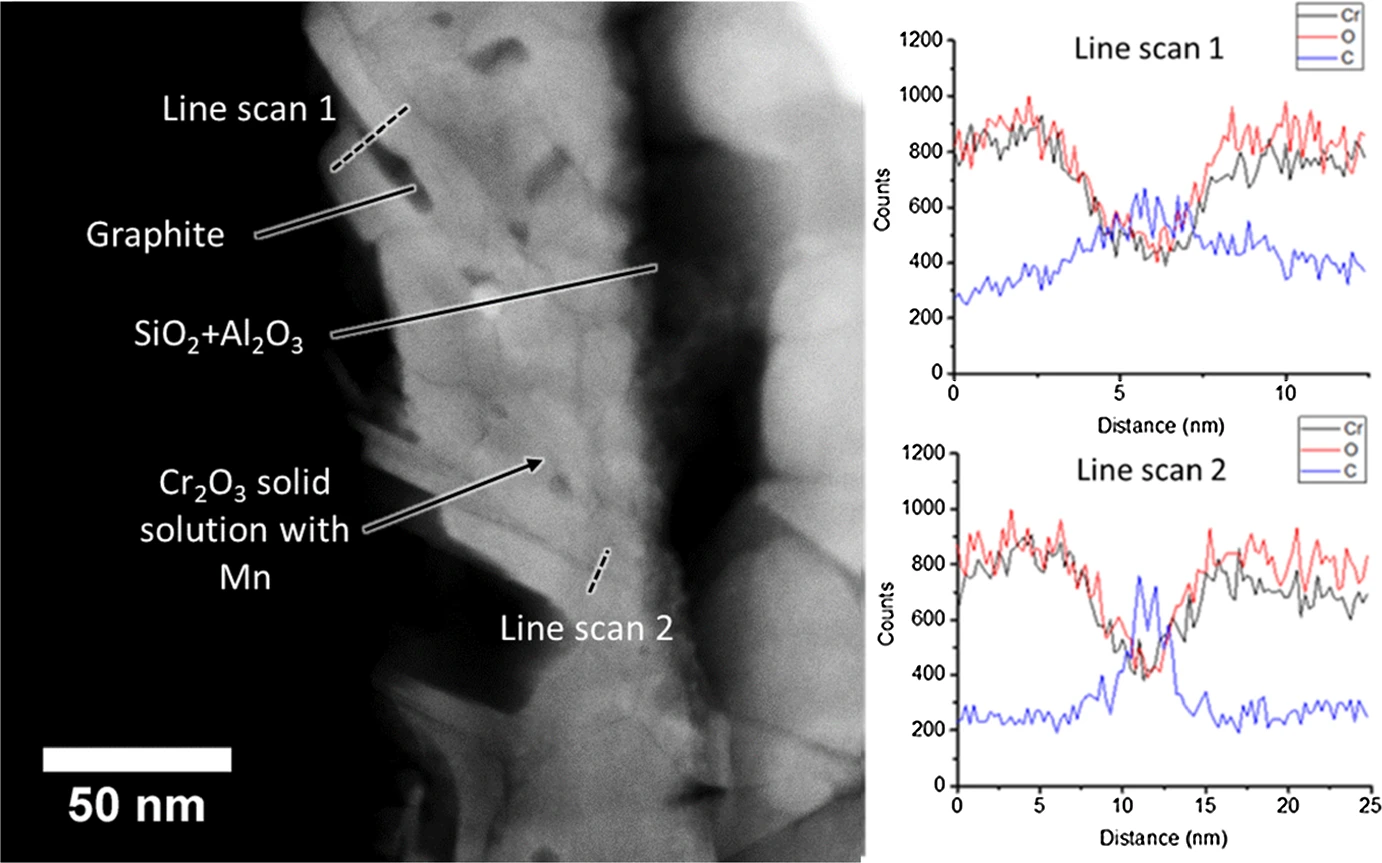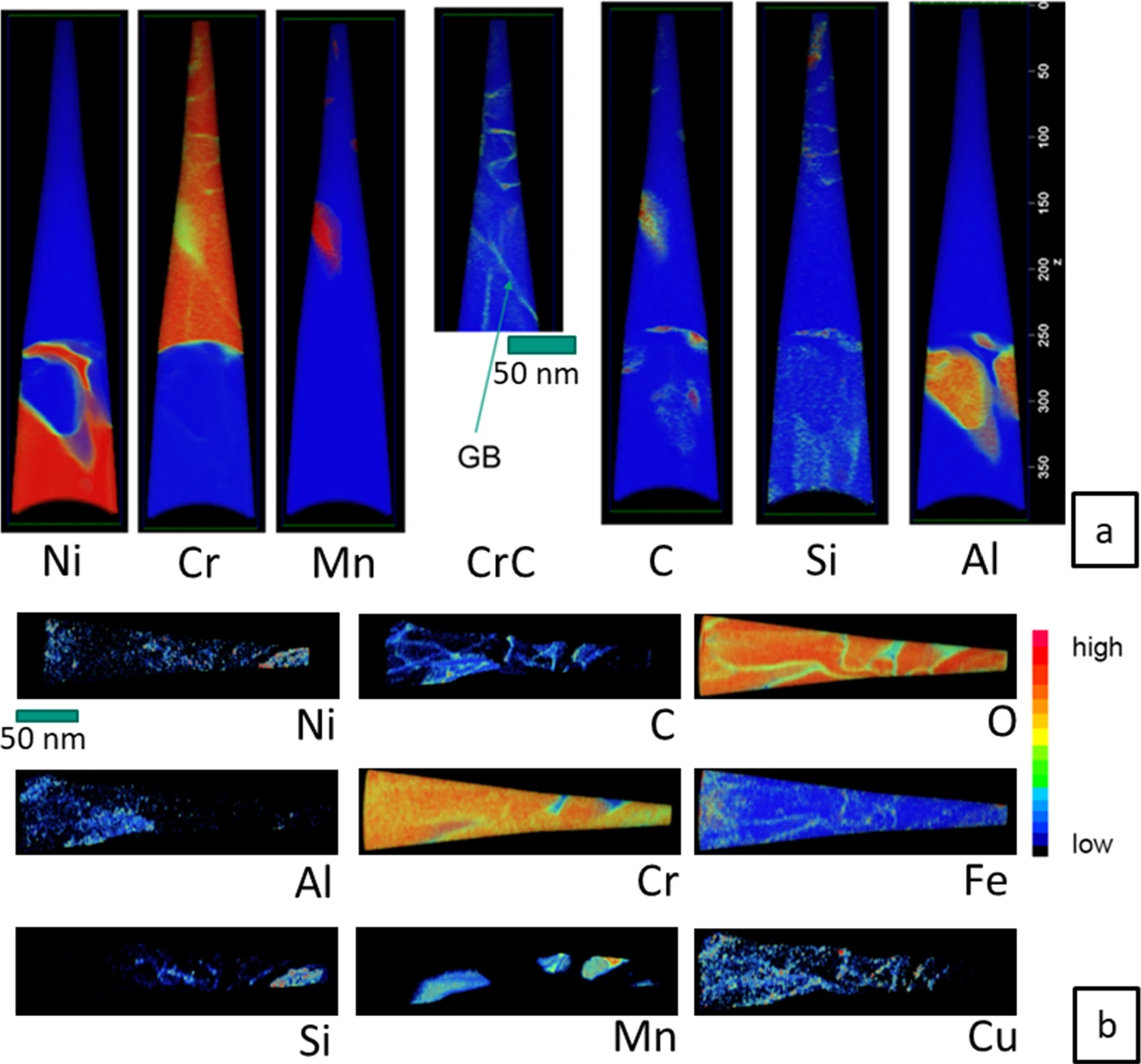M.C. Galetz, C. Schlereth, E.M.H. White, T. Boll, M. Bik, M. Sitarz, W.-T. Chen, B. Gleeson
High Temperature Corrosion of Materials 100 (2023), 541-555, DOI: 10.1007/s11085-023-10201-2


Commercial alloy 600 was exposed to a metal dusting inducing gas mixture to investigate the effect of ambient and elevated pressures on the oxide scale formation behavior. The formed scales on this alloy were investigated via Raman spectroscopy, transmission electron microscopy (TEM), and atom probe tomography (APT) to reveal the differences in their morphology and chemical composition(s). Raman spectroscopy revealed graphite within the chromia scales as well as oxide grains with Mn–Cr spinel. High-pressure exposure promoted the presence of Mn within the oxide scale, and APT demonstrated these Mn-enriched areas dissolved up to 4 at.% C. This was consistent with the TEM results, which confirmed higher amounts of Mn in the scale formed under elevated pressure, as well as crystalline graphite in the scales for both conditions. The consequences for the scale breakdown, reflecting the end of the incubation time for metal dusting attack, are discussed in light of these results. A two-fragment dissociative adsorption model for CO, previously applied to catalysis reactions, is proposed when Mn is incorporated into the chromia scale.